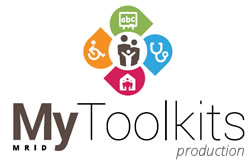Co-design shapes the way health services make decisions about what they offer and how it is delivered, based around the changing needs of the service’s core client group. It also redefines the way clinicians work with consumers and carers on an individual basis compared with traditional medical practices.
A person-centred approach places consumers and carers at the centre of the clinical process and is about establishing priorities in order to meet their needs.
In traditional medical models, patients were required to visit individual practitioners for an examination and assessment, and received prescriptive decisions about what treatments and care strategies would be applied. Co-design turns this process around and acknowledges the consumers’ role as an active participant in deciding what issues are most pressing for them, and how the best potential solutions might be put into place.

Rethinking Clinical Practice
Co-design involves health practitioners and clients and carers reaching an understanding about their goals and working together to decide on appropriate interventions. It is vital that clients and carers feel actively consulted and engaged as partners in this process. If they do not, it is less likely that prescribed recommendations will be followed through. Every effort should be made to encourage clients and carers to have their experience heard and ideas considered.
No one person has all the answers, and all parties need to respect and validate the knowledge and expertise of each other. Both parties draw upon their combined depth of experience to explore which ideas will be most appropriate and practical. It is in this process that there is potential for creative thinking, innovative ideas and progress.
In the clinic context this means:
- Clients/consumers should be invited to bring a support person (for example, a friend or family member) to any consultation, or the participation of a carer or consumer advocate should be offered.
- Health professionals should avoid using jargon and technical language and provide detailed explanations using language tailored to the client’s requirement.
- Clients/consumers from non-English speaking backgrounds should be offered an interpreter, and interactions should be culturally sensitive.
- Processes and procedures including documentation should be transparent to the client and carer, where possible.
- Follow-up support should be provided, for example a follow-up call from a clinician or advocate after a consultation.
Rethinking Health Care
Effective co-design requires health practitioners to rethink not just what happens when they see a client, but also how and where they are seen.
Barriers to attending a clinic appointment can include distance, expense, disruption of routines and the difficulties of bringing an individual with complex health needs into an unfamiliar clinical environment. These barriers can make it difficult for a client or family to meet with a clinician in the usual way, meaning clinicians may need to rethink how they deliver health services.
This might include utilising new technologies, such as videoconferencing or teleconferencing and formation of new partnerships (e.g. between primary and specialist health services in different locations). Videoconferencing and teleconferencing offer the advantage of being able to involve and include participants in multiple locations with the aim of achieving multidisciplinary, interagency collaboration. It should be noted that these options aren’t always appropriate, particularly when highly sensitive or confidential information needs to be shared.
Informal consultations may also be enabled for individual clients unable to travel to a clinic appointment (for example via Skype or using smart phone technologies), particularly if the client and family are already known to the clinician. Ongoing phone and email contact may also be considered where the family are well known to a service provider.
Another alternative for overcoming barriers to medical appointment attendance is to physically bring the health team to somewhere more convenient, accessible and familiar to the client and their family. School clinics are one such example. These multi-disciplinary, interagency clinics allow for consultation with clients’ families and teaching staff involved in their care on a day-to-day basis within the familiar environment of the child’s school. They provide an effective model for engaging families caring for a child with complex needs and delivering directly to them the best possible quality of health care.
For more information visit www.schoolkit.org.au




